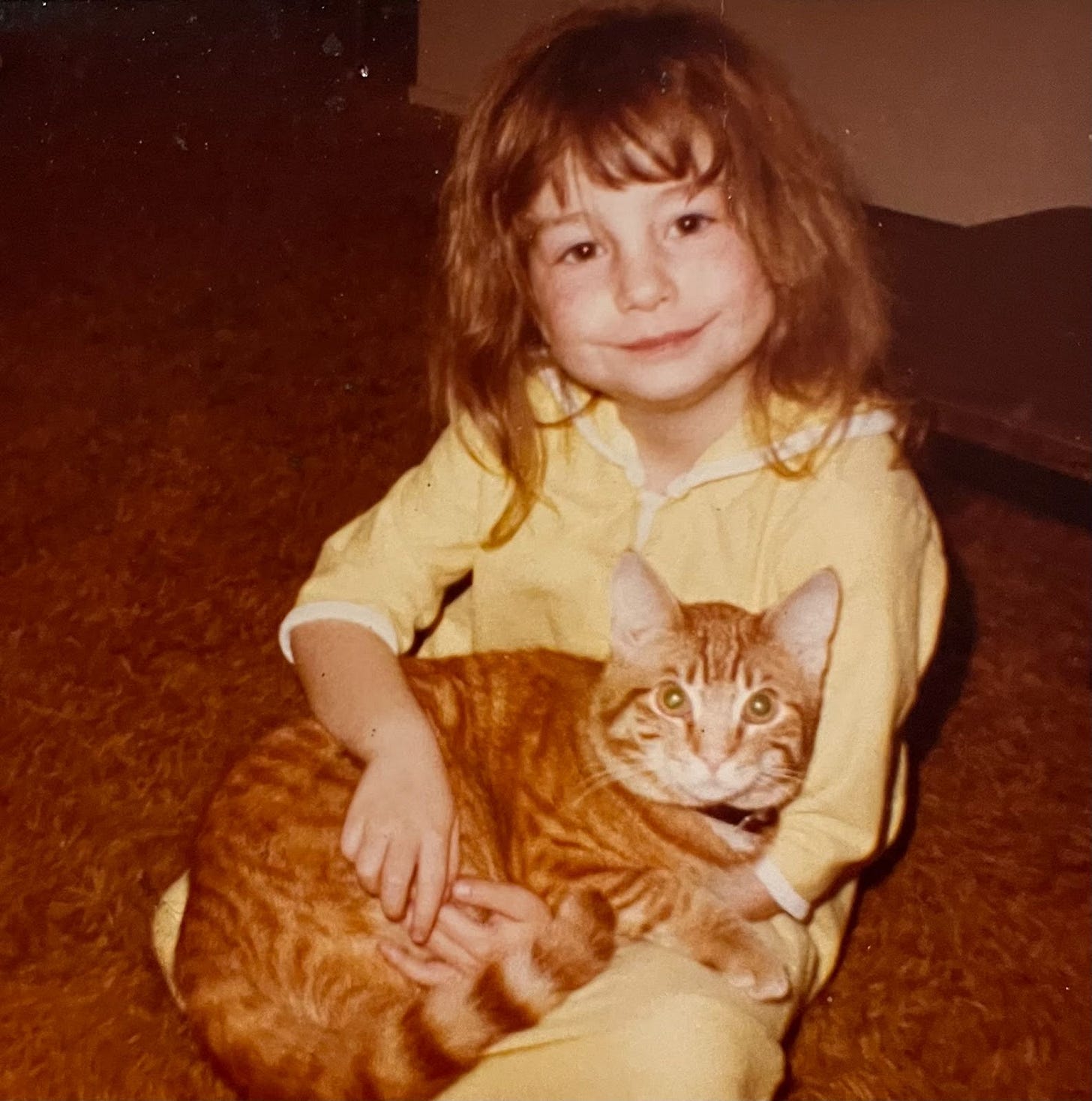Update: A federal judge ruled that emergency funds can be used for SNAP, but it’s not yet clear if this applies to all states or only those involved in the lawsuit. The decision could also be appealed or delayed. Even if funds are released, it will take time for them to reach families. That’s why these resources are still important, and why we should keep helping our community.
If you don’t know how you are going to feed your family this month, this post has a list of resources you can look into today.
If you do have enough food for the month, please share with your neighbors and your wider community.
We all do better, when we all do better.–Senator Paul Wellstone
Uncooked ramen licked
Then dipped in salty powder
Dinner for a kid
When I was five years old, the only job my mom could find forced her to be away from home in the afternoons and evenings. And the little pay she earned was not enough to cover rent, utilities, food and childcare. She had to make heart-rending choices.
I would walk home from kindergarten, using the key hung from a little pastel colored piece of yarn around my neck to let myself into our apartment. The silence felt lonely to this burgeoning lil’ extrovert, so my first stop was always to turn on the TV. The afternoon soap operas first, then Gilligan’s goofiness in endless reruns, the antics of three unlikely roommates in Three’s Company, followed by the crew and passengers of the Love Boat. These characters were my afterschool companions.
When I began to feel the gnaw of hunger in my belly, I would go into the kitchen and grab a plastic package of Top Ramen (at 10¢ a package, it was dinner many nights). I would bring the package together with a little saucer back to the carpet in front of the TV, open it up, break off little chunks of crispy uncooked noodles, lick the light tan strands, and then dip them into the pile of chicken flavored soup powder that was poured into the saucer.

(Me and Puddin’ Butterscotch –yes I named him and yes, I insisted that his flavor came second.)
Fast forward 24 years…
Uterus growing
Me and Dave without a job
WIC comes through for us
With the love and support of an amazing community, and help from local, state and federal programs, during those vulnerable times, I was kept fed and clothed and housed until I turned 18. I then finished 4 years of college, married a kind, supportive, smart, funny, and hard working human, and went back to school to get my first master’s degree. As life would have it, at age 29, I found myself in another vulnerable moment: pregnant and unemployed. That’s when our country’s supplemental nutrition program for Women, Infants and Children (WIC) [archived link] came through for us. With WIC’s help, we made it through that tough period and got back on our feet.


(Me on my due date) (Ella at one month old)
I am telling these personal stories for a few reasons.
Shame, stigma, and unconscious biases often come hand in hand with receivinggovernment support. My mom had tremendous self-loathing for not being able to provide for our basic needs. She did not recognize the systemic cards stacked against her and many people in our country. By being visible as someone who has received support from these government programs, I hope to destigmatize this reality. 41 million people [archived link] currently receive support from government supplemental nutrition programs. On November 1, 2025, states will run out of money to fund these programs because of the current government shutdown.
Shame, stigma, and unconscious biases often lead those of us who are adequately housed and fed to “other” folks who are in vulnerable times or contexts. “They are different from me” and “That would never happen to me” are beliefs that keep us from banding together to ensure that we all have what we need to live and thrive . A hard reality is that many Americans who don’t currently qualify for federal food aid are only one emergency — an accident, steep medical cost, or even unplanned pregnancy — away from needing it. The wealth gap is such that the reality of needing SNAP, WIC, etc. is much “closer” to the middle class than we think. This type of thinking “this can’t/won’t happen to me” can also keep us from voting for policies that fund our social safety nets.
I want to shine light on the truth that many of us experience these types of vulnerabilities, people you might not expect, like me, a family nurse practitioner and executive director of Those Nerdy Girls and our Chief Science Officer, Dr. Liz Marnik. You can read her story about her family’s food insecurity here.
I want to shine light on the truth that when our social safety nets work, folks like Liz and I break out of the cycles of poverty and are able to grow up and contribute to our communities.
I want to shine light on the truth that people from systemically marginalized communities, our Brown and Black neighbors, our disabled neighbors, our LGBTQ2S+ neighbors, our elders, our neighbors with mental illness or chronic diseases, our immigrant neighbors, our neighbors in rural areas have a harder time accessing safety net resources [archived link] and face barriers that sometimes are put into place intentionally. They then may be judged for “character flaws” for not being able to get out of the cycles of poverty, like others who have fewer barriers. About 39% of people affected are children who have absolutely no control over their food access circumstances.
When grouped together, personal experiences of individual people, like Liz and me, give us the information that we need in public health to make things better for everyone. And what we know about social safety nets is that not only do they help individual families, they help the whole country by helping protect and grow a robust labor force [archived link] with higher wages and more spending power, in turn ensuring the country’s economic well-being. Social safety nets can also be seen as a form of preventative care, potentially reducing healthcare costs by helping us avert down-the-road chronic diseases, health crises, and expensive medical emergencies. Read Epidemiologist Dr. Emily Smith’s newsletter for more details on how providing SNAP benefits is good for the economy and our collective well-being as neighbors.
But most importantly for this particular moment in time, I want to let you know
You are not alone.
Here are some resources that may help you find food so you can fill your bellies in November:
- The Emergency Food Assistance Program (higher incomes allowed than for SNAP) The Emergency Food Assistance Program
Instructions for filling out can be viewed here.
- Too Good To Go: Join Our Food Waste Movement – Too Good To Go
- Project Food Box: Project Food Box
- Urban Farming Institutions for each state and US territory:
- Baby formula: The Free Formula Exchange
- Discounts at grocery stores: Flashfood | Locations
- If you have to choose between food and medicine, here are instructions on how to request medications from the pharmaceutical companies:
- Give and get food with this community sharing app: Olio is not yet very active in the US, but it is growing. Start by sharing. Ideas on how to get started.
- For people over 65 or disabled: How to Qualify | Mom’s Meals
- One stop site for help: FindHelp.org
- $50 free groceries for SNAP recipients in November with Gopuff. Directions on how to sign up here.
If your situation is making you feel hopeless or in despair, that is understandable.
Please call 988, the national crisis lifeline.
Your area might also have a 211 line with other resources not listed here. We are holding you tight.
If you are adequately fed and housed, share the above resources within your communities and review this list that Liz and friends compiled of other ways you can help.
- Donate money to your local food pantry. Even a few dollars add up. Donate food if that’s easier. But food pantries know how to stretch their donated dollars. Please also check with them about what they actually need.
- Organize a food drive at your work, school, or other community location. But connect to your local pantry to find out what food items they need and can accept.
- Make a meal and drop it off to a family you know is in need.
- Ask your child’s school if you can drop off extra snacks for them to distribute.
- Volunteer to cook for/at a local community meal.
- Call your representatives and tell them you need them to act on healthcare and food access. Food AND healthcare should be part of our basic human rights. Text SIGN PKJTCO to 50409 to send an email to your representatives.
An enormous amount of gratitude to @beverlydines, @sciencewhizliz, @sciencewithanni, and @itshaleypeper for their hours of work in compiling these resources.


